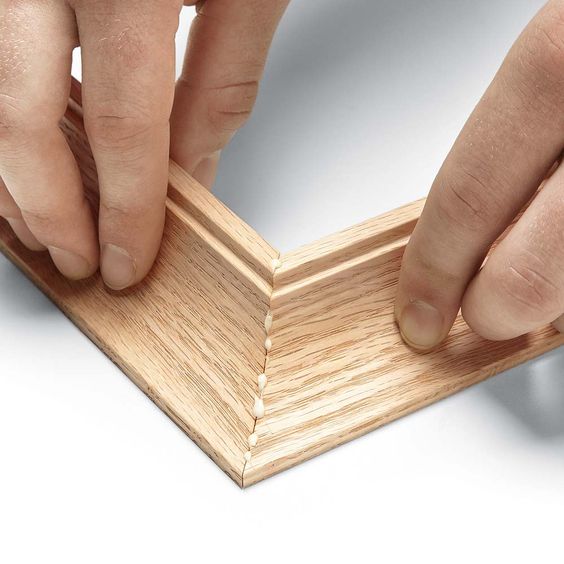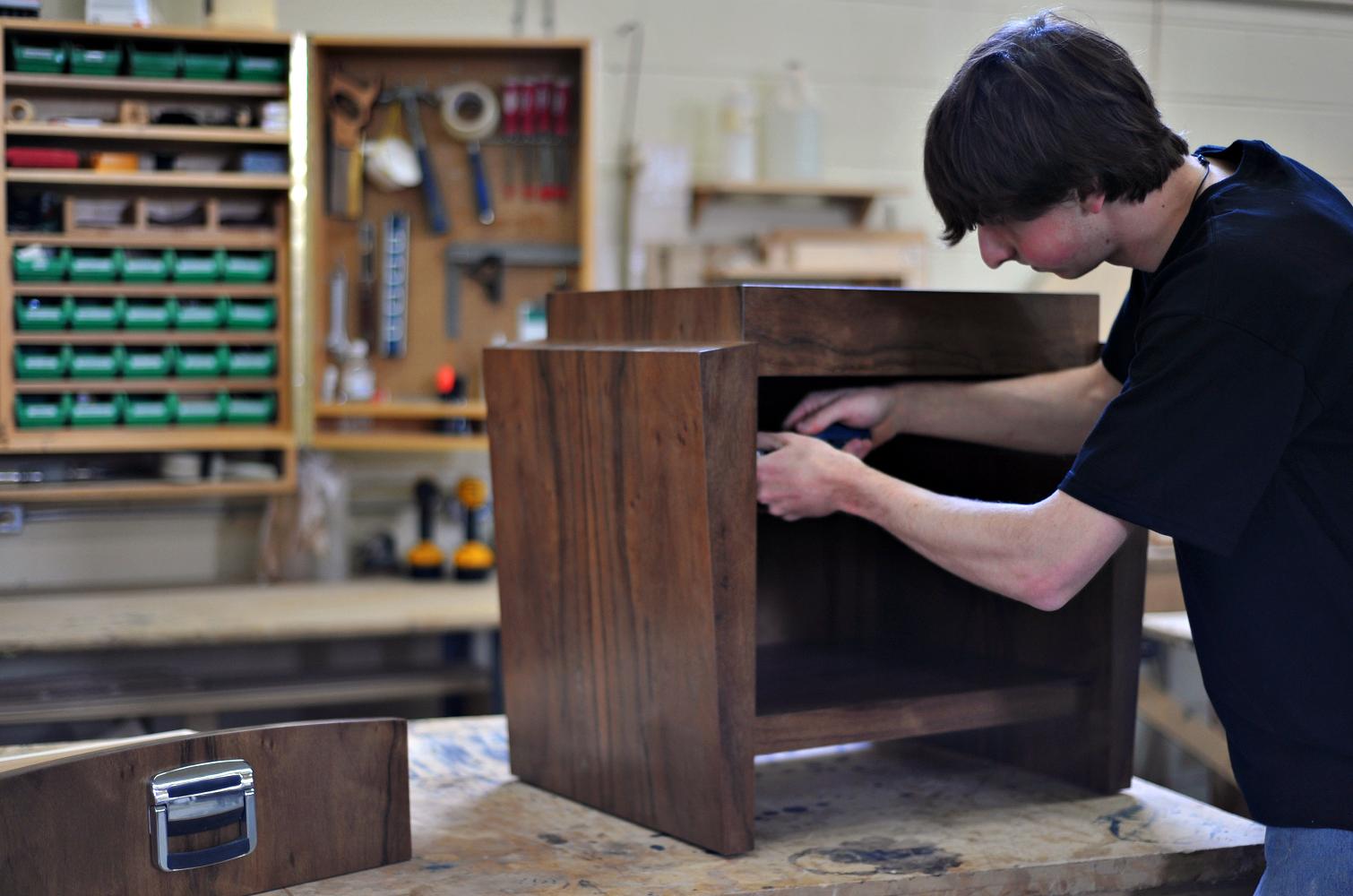When the furniture is completed, defects are identified which are often blamed on the finishing materials used or their application. This is not the first time I have written about factors that influence the quality of the finish. Read more about the influence of environmental factors here. This time I want to draw attention to some defects that appear long before the wood is stained and varnished and that go unnoticed until the finishing.
Defects from mechanical woodworking
Defects can appear as early as the cutting, machining, assembly and blank preparation stages, but go unnoticed until they are highlighted by colour, primer or varnish. And if the lacquer applied has a high gloss, any defect, however small, is magnified.
Let's take the example of the flow of veneers. This is done with knives. If they are not well sharpened, fibre pull-outs occur, which later lead to glue penetration during veneering. In this area stains will appear when the veneering is done and the adhesion to the substrate will decrease. This is why, in addition to the permanent control of the knives, the veneers must also be sorted according to quality.
The quality of the knives and changing them when problems occur or when recommended by the supplier is also valid when cutting timber. They should also be chosen according to the operation being performed. Defective or unsuitable knives result in defective cutters that will cause problems later.
Assembly of wooden elements
After the parts are made, the next stage in production is their assembly. This is where defects can occur that can be easily overlooked. Glue stains, small dents from tools (especially in less hard wood), fine scratches, grouting with materials incompatible with finishing products, greasy hand marks, etc., may not seem so important in assembly, but in finishing they are.

Sanding wood before finishing
Defects arising during assembly can be rectified when white grinding. It is the key to a quality finish. Careful sanding of the workpiece will remove fine, superficial scratches. Sanding can also remove traces of glue, excess putty or handling stains.
Unfortunately, this is also where new defects can occur. Sanding with paper that is too fine-grained can compromise staining. When sanding perpendicularly between elements, if the sanding is not done along the grain on both elements, the one that has been sanded perpendicular to the grain will show scratches when staining.
Defects occurring during the assembly of finished elements
Sometimes defects can appear at the final inspection, even if everything seemed fine after finishing. There are cases where the furniture is assembled not before but after the parts have been finished. If they have not been left to dry for the recommended time, impressions and scratches from the tools used for assembly may appear on the lacquer film.
In general, for normal drying products, a 24-hour lead time is recommended before assembly and packaging. During this time, the film formation process is definitive and the film hardens in depth and not only superficially. Time is also needed to remove any solvent remaining in the film. If it is not completely removed, and the furniture is wrapped in plastic film, the solvent removed may soften the film again and impressions may appear on it.

My advice is to check the wood carefully before finishing. Discovering these little "accidents" before you start staining and varnishing will save you extra work and wasted money. Because finishing will make the little "accident" big enough to count where it hurts - on the money.


























Add comment